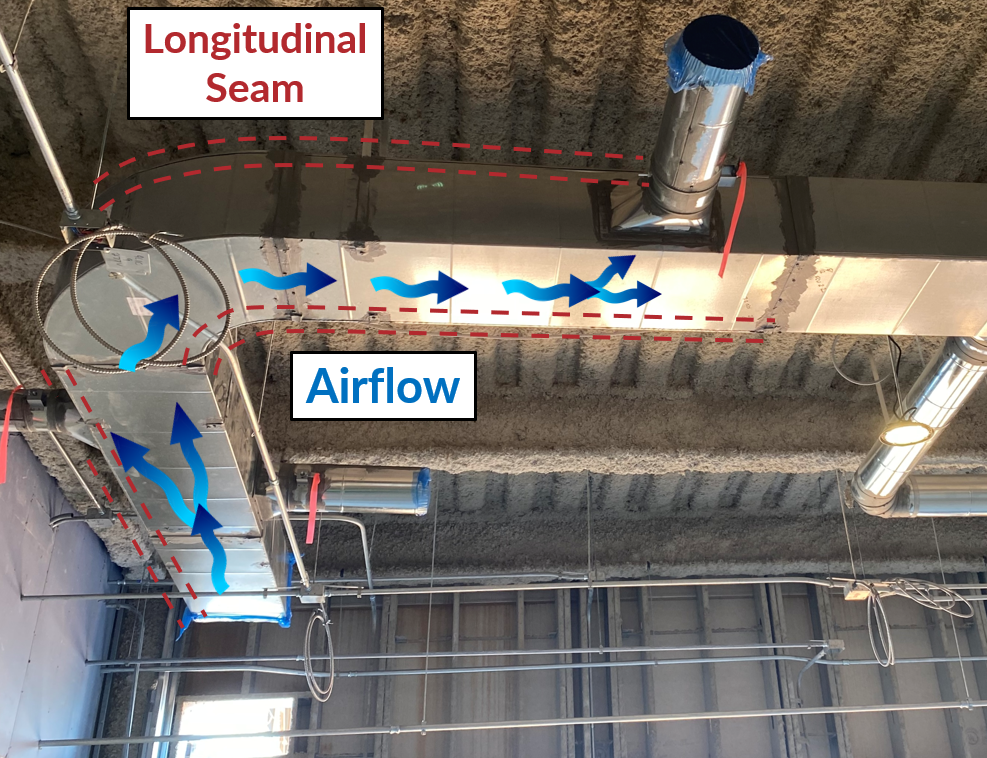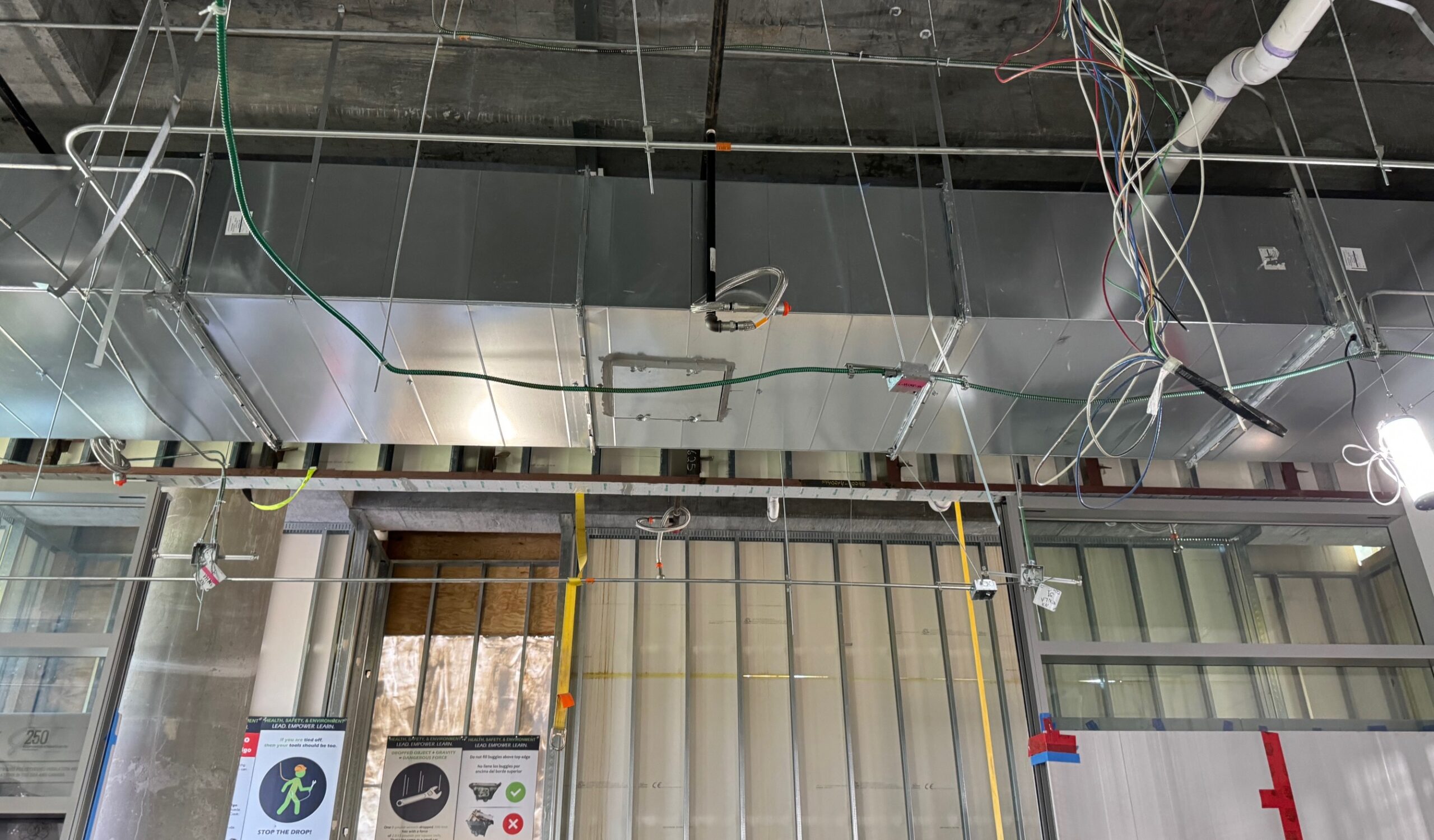
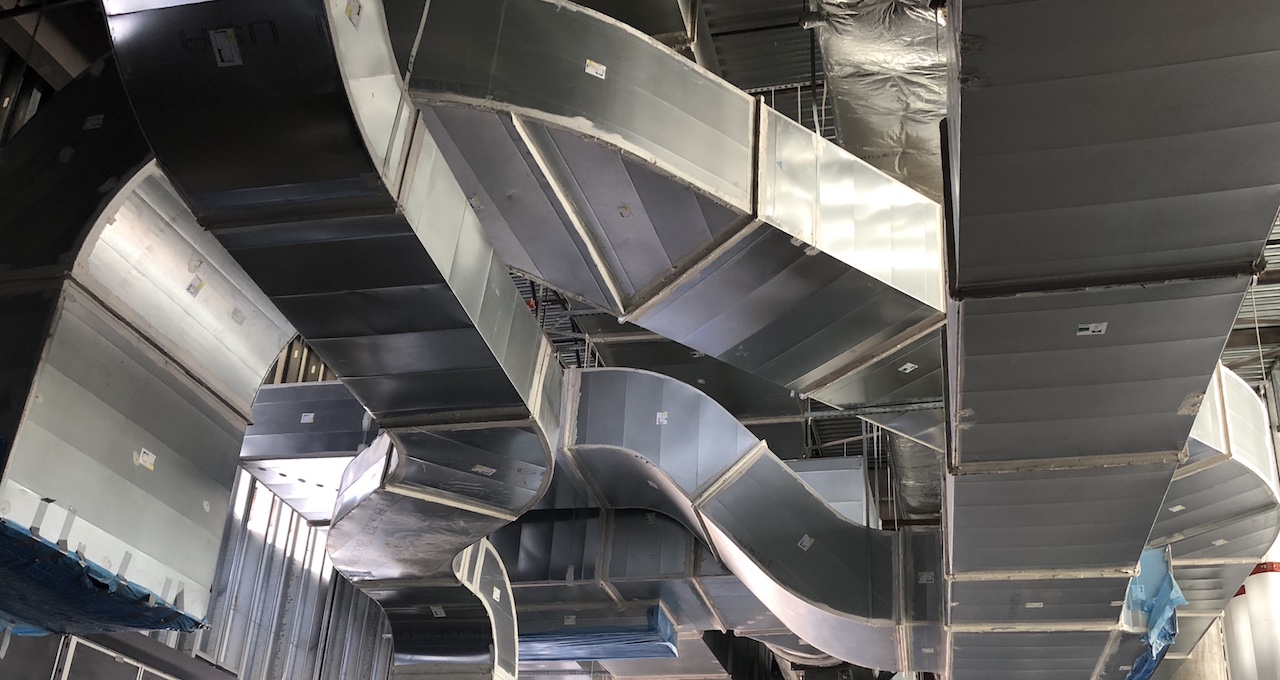
Straight Run of Rectangular Trunk Line (left); Trunk Duct coming out of Mechanical Room in Airport construction (right)
In commercial buildings, whether it be a school, movie theater, office building, arena or hospital, there is a trunk line in the Ductwork serving as the main artery for airflow originating from the indoor air handling units (AHU) or outdoor rooftop units (RTU).
This trunk duct, also referred to as loop duct, is usually rectangular and contains the highest pressure of airflow in the system. It typically loops around the perimeter of the ceiling space while also transversing it in a smaller rectangular size as it “steps down” several times by use of reducers and offsets to move around other fixtures in the ceiling grid.

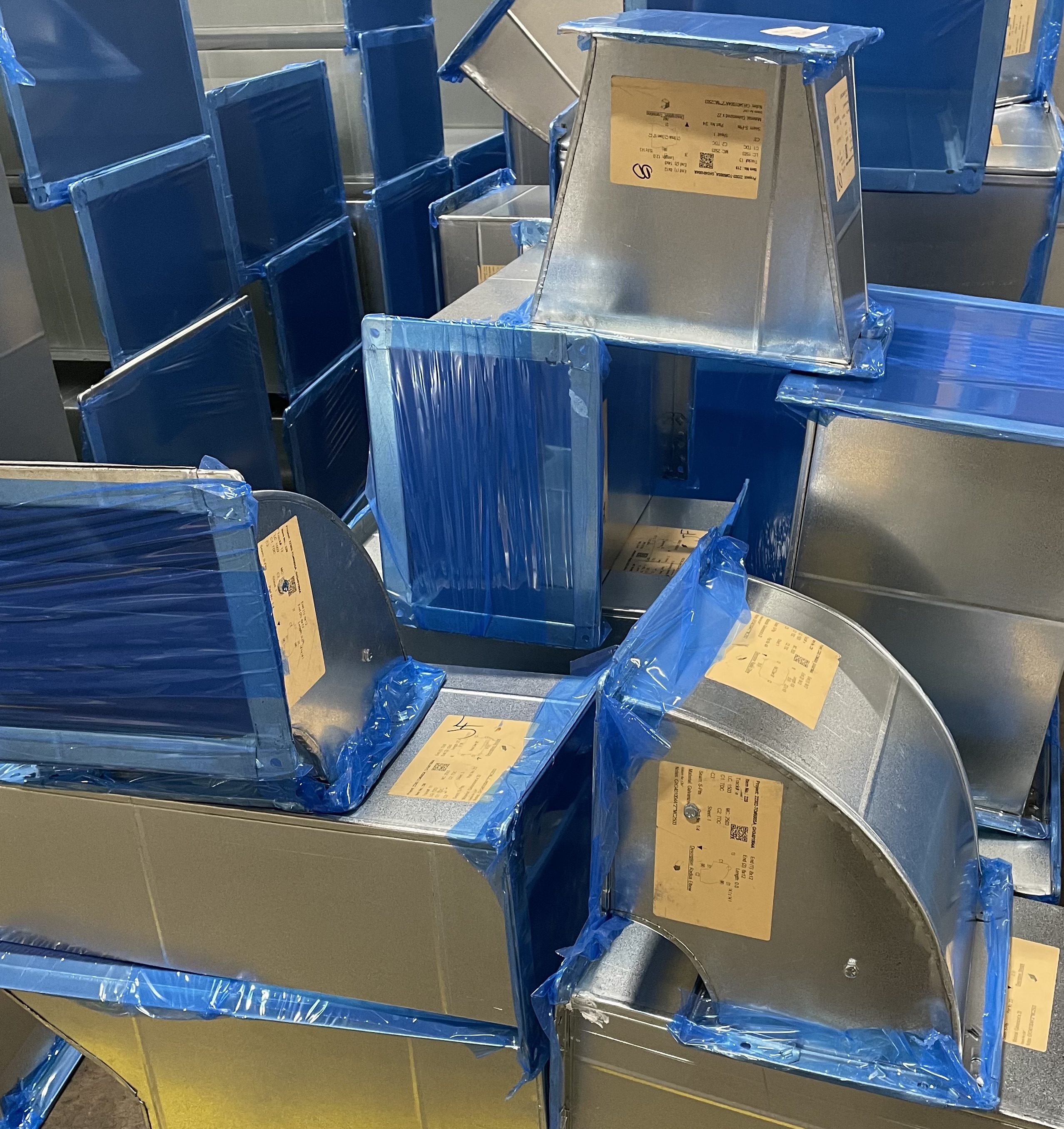
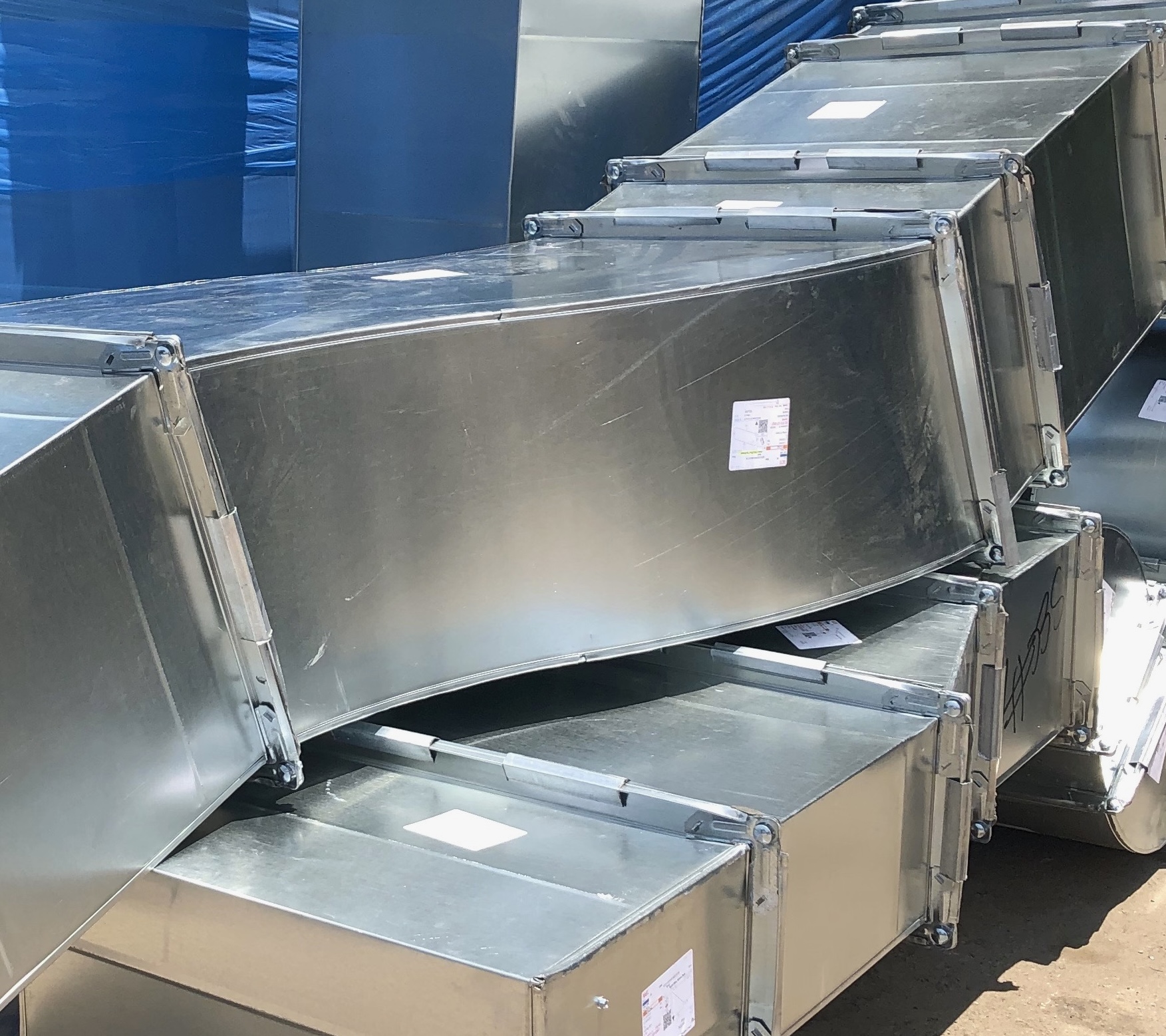
Rectangular Duct Reducer (left), Reducers and Radius Elbows (middle), Rectangular Duct connected (right)
Even though the rectangular duct steps down into smaller dimensions as the duct moves further away from the air handler, it’s still considered trunk duct because it can be traced directly back to indoor air handling units or outdoor rooftop units.
Any duct that is tapped into the rectangular duct isn’t considered trunk duct but instead, branch duct that’s part of the air distribution portion of the ductwork supplying airflow downstream to the individual rooms and spaces. Branch duct comes off the side of the rectangular duct by means of a fitting that connects the round branch duct to the trunk duct.
These fittings—whether they are Airtite Takeoffs, Shoetap HETOs, or Conicals—are flat on one end and round on the other. The end that’s flat is cut into the trunk duct; the end that’s round is connecting to either spiral duct or Snaplock pipe.
Why is Rectangular Duct used for Trunk Duct?
Though engineers have moved towards designing for more ceiling height, they haven’t increased the space between floors. A typical multi-story building might therefore have 12-ft in between the floors, but a design calling for 10.5″ ceiling height which leaves only 18″ to put the ductwork, sprinkler lines, electrical, plumbing, gas, mechanical piping and refrigerant lines (not to mention the joists and hangers). These various trades are each trying to fit their respective work in one space and that space on paper doesn’t always hold accurate in reality. Rectangular Duct has two main advantages in a congested ceiling space—dimensional versatility and ease of modification.
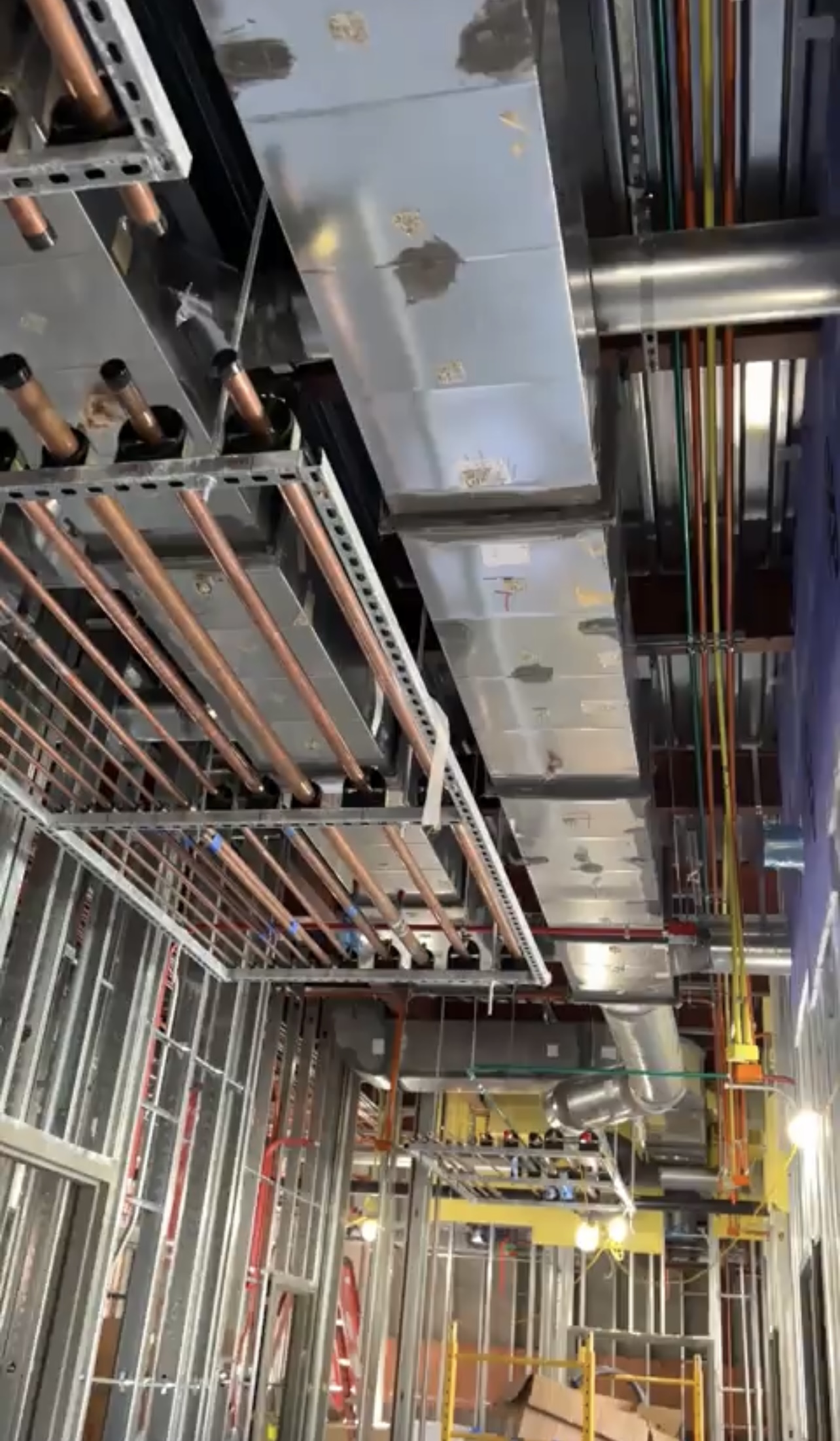
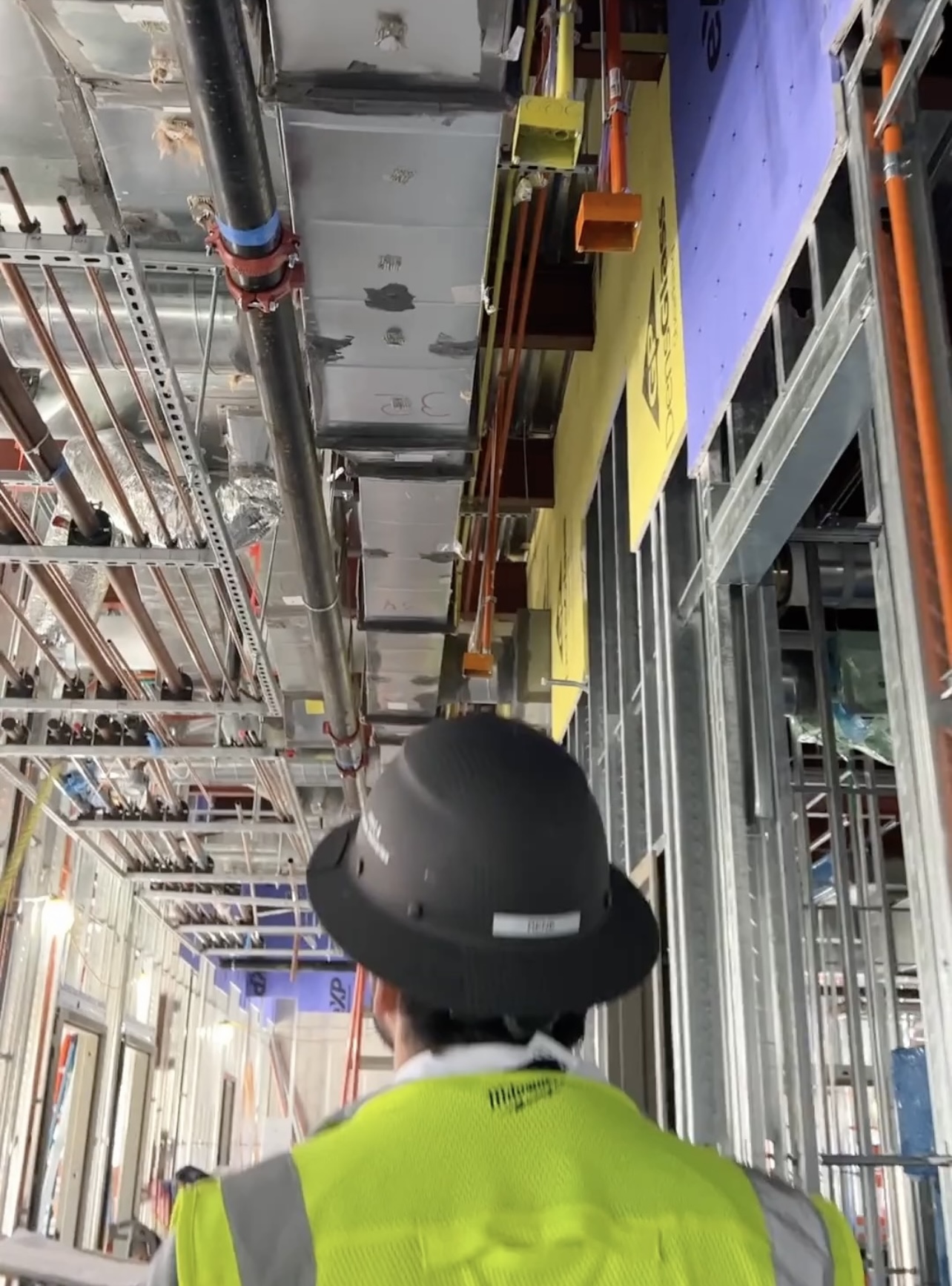

Mechanical pipe, plumbing pipe, sprinkler, electrician all fighting for space in the ceiling
Dimensional Versatility
By shortening the two vertical dimensions and widening the two horizontal dimensions, an engineer can modify large square duct into a rectangular shape to retain the same circumference of airflow into a space. For example, a square Duct size of 32″ x 32″ might drop down too low from the ceiling, but shortening the two height dimensions to 24″ and widening the horizontal to 40″ might consume less space but still equal the 32″ square duct. This flexibility to shorten two dimensions and lengthen the other two allows for larger duct to fit into an increasingly congested ceiling grid.
Oval duct is occasionally used as trunk duct. The concept for using Oval Pipe is the same for using rectangular instead of square: take an existing piece of round spiral duct, put it in an Ovalizer and widen the major axis while shortening the minor axis.
Unless the job is dominated by runs of straight duct, oval duct is typically cost prohibitive because the fittings cost so much to make. Oval fittings are constructed around the welding the transverse parts into one rather than the construction around the longitudinal as is the case with Rectangular duct fittings. Plus, the duct shop would require a spiral machine but also an Ovalizer since the Ovalizer is a separate machine that takes round spiral duct and pushes it into the required oval dimensions.
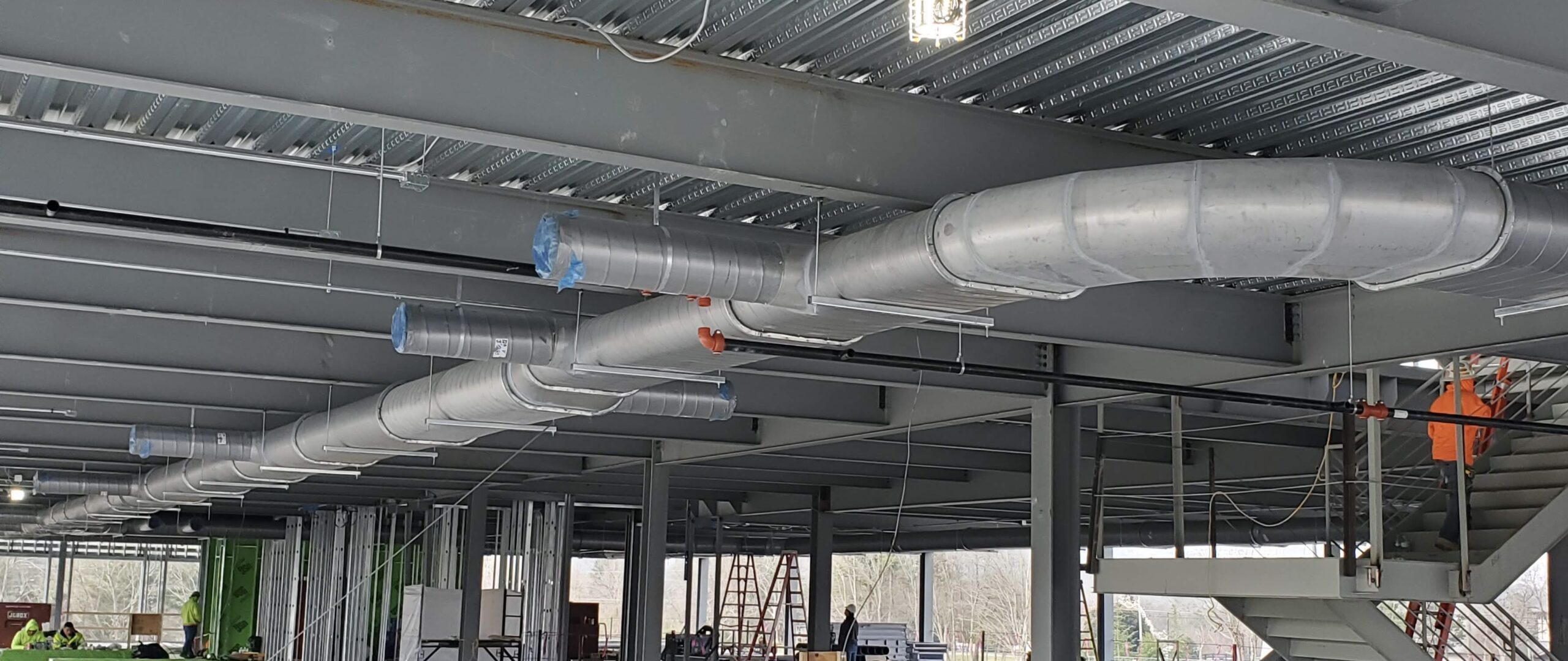
Oval used as Trunk Duct
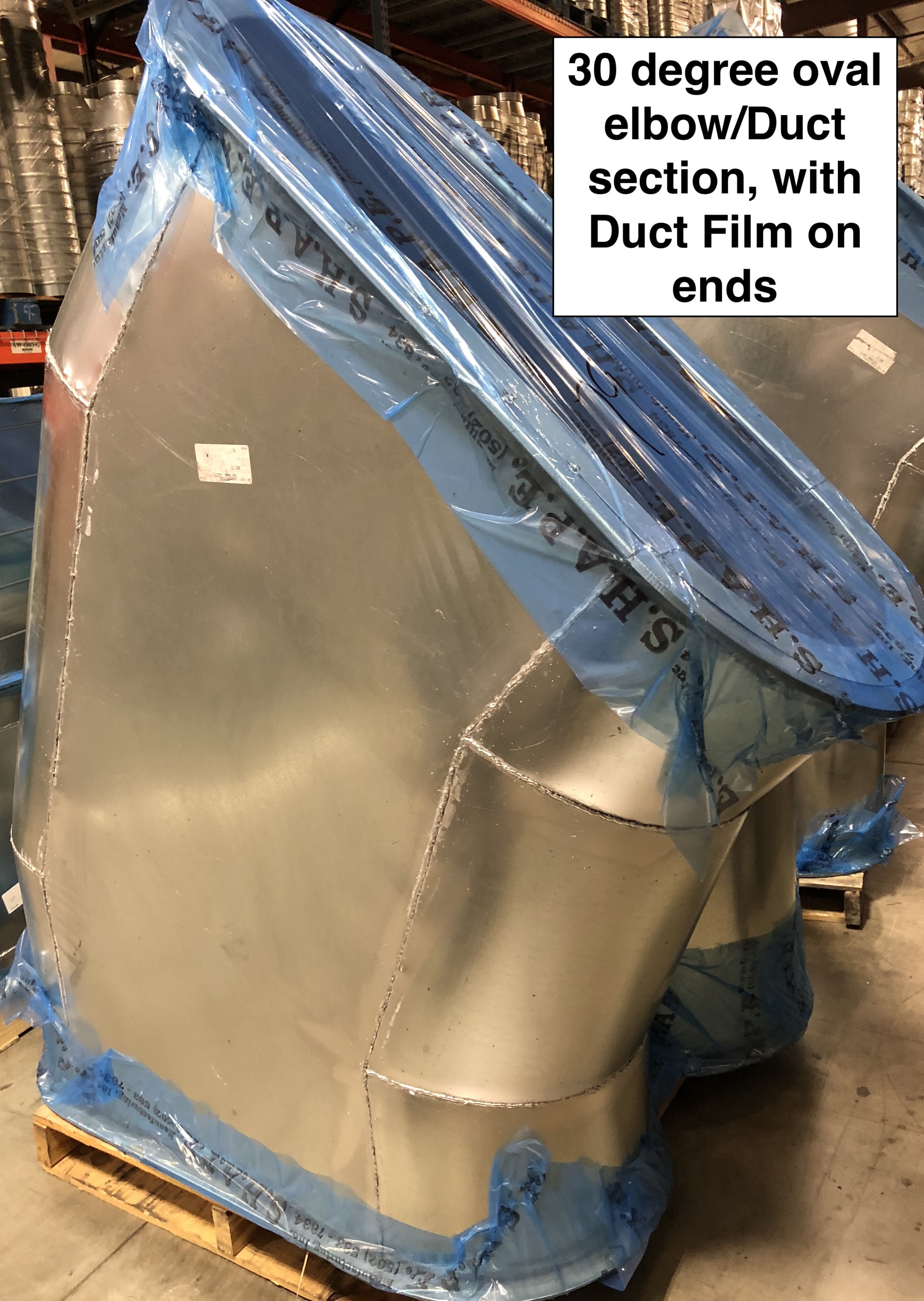
Oval has no longitudinal seam and therefore fittings must be welded
Modification
While the ductwork is the largest physical component of the materials in the ceiling grid, it’s also the easiest to modify because the basis of it’s construction is a longitudinal seam called the Pittsburgh Lock that enables the duct to retain the exact dimensions in fittings as it does as straight duct without sacrificing any strength or leakage. As long as the female Pittsburgh seam is formed in the flat, it can then be rounded or bent in a brake so that it changes directions without changing dimensions—giving an appearance of shape shifting up and down, side to side, to most any offset degree required when moving around mechanical piping, Sprinkler lines, walls and other obstructions in the ceiling space.
The Basics of Rectangular Duct:
Rectangular duct is either straight Duct sections or Fittings. Straight duct begins at either a free standing shear or at the shear in a Coil Line. In straight duct the width of the sheet (4 ft or 5 ft) becomes the length of the duct as well as the longitudinal seam.
Rectangular duct fittings begin at the Plasma Table on a 4×10 or 5×10 sheet cut into 4 flat pieces per fitting. Each fitting will have four longitudinal lock seams and the longitudinal seams on fittings will run the same direction as the longitudinal seams on straight duct.
Whether it’s straight duct or fittings, the ductwork is fabricated around a longitudinal seam and a transverse joint. In the fabrication process, the longitudinal seam is formed before the Transverse Joint profile.
The longitudinal seam can either be Pittsburgh or Snaplock (aka Buttonlock) but for Jobs in which multiple trades are in a congested ceiling space, Pittsburgh is always going to be used, especially on the fittings.
The transverse joint is the end to end connection and can be “S” & Drive, Ductmate, or TDC/F. It isn’t as important to the duct’s integrity until it’s connected on the Jobsite.
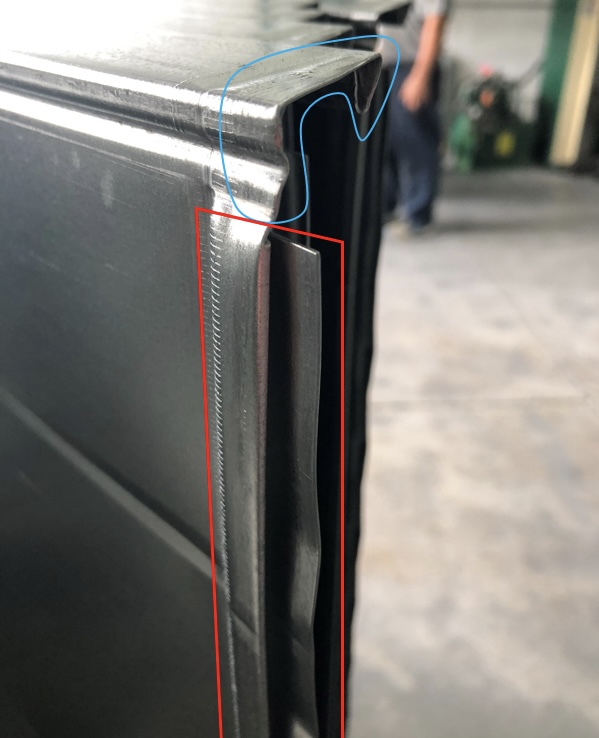
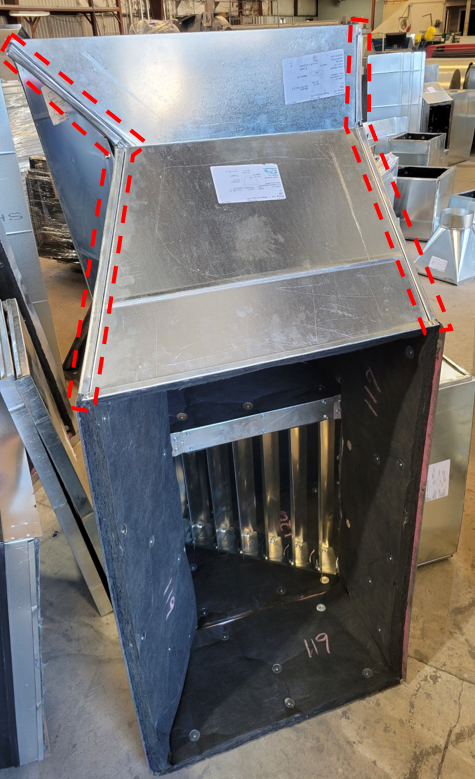
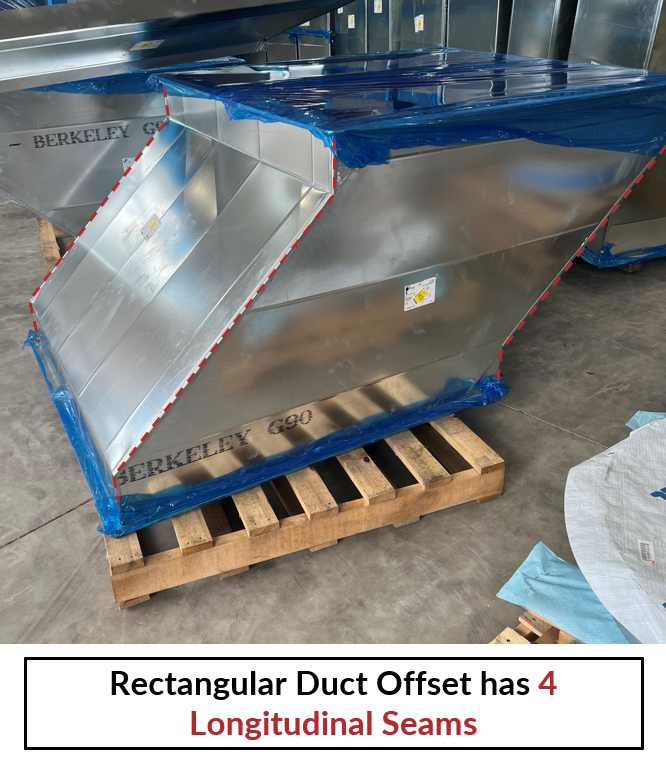
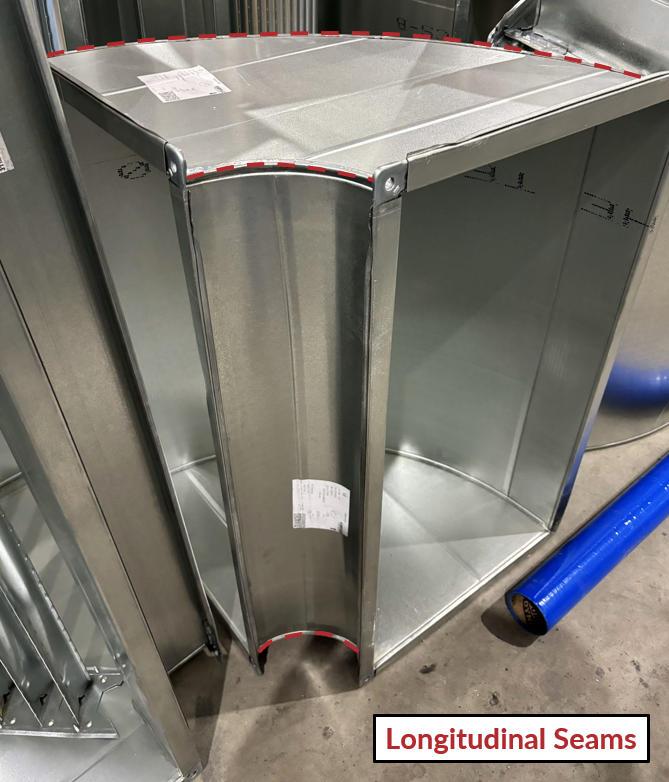
Transverse shown in blue: TDF (top left), Longitudinal shown in red: Pittsburgh seam (top right, bottom left & right)
More about the Pittsburgh Lock
Since the longitudinal seam is the basis for the duct’s construction it’s important to the integrity of the duct as well as rectangular duct’s versatility when it comes to making fittings that retain the same dimensions as the straight trunk duct to which they will mate. The Pittsburgh lockseam always runs parallel with the airflow and allows the duct this versatility of shape shifting up and down, side to side, to most any offset degree required, while keeping the same appearance throughout these movements.
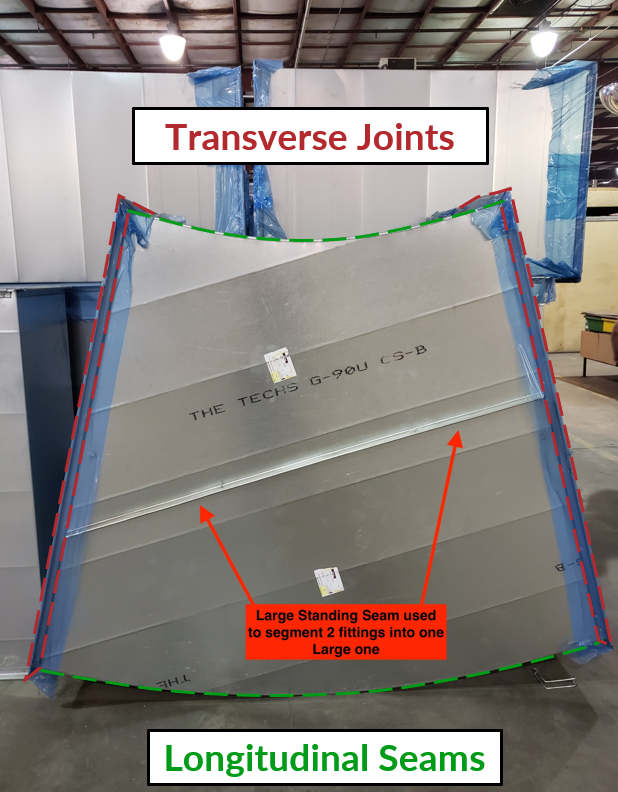
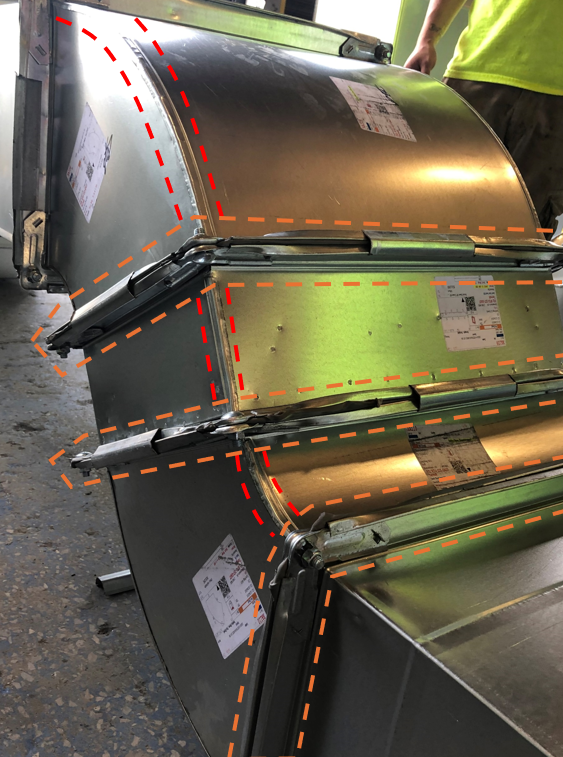
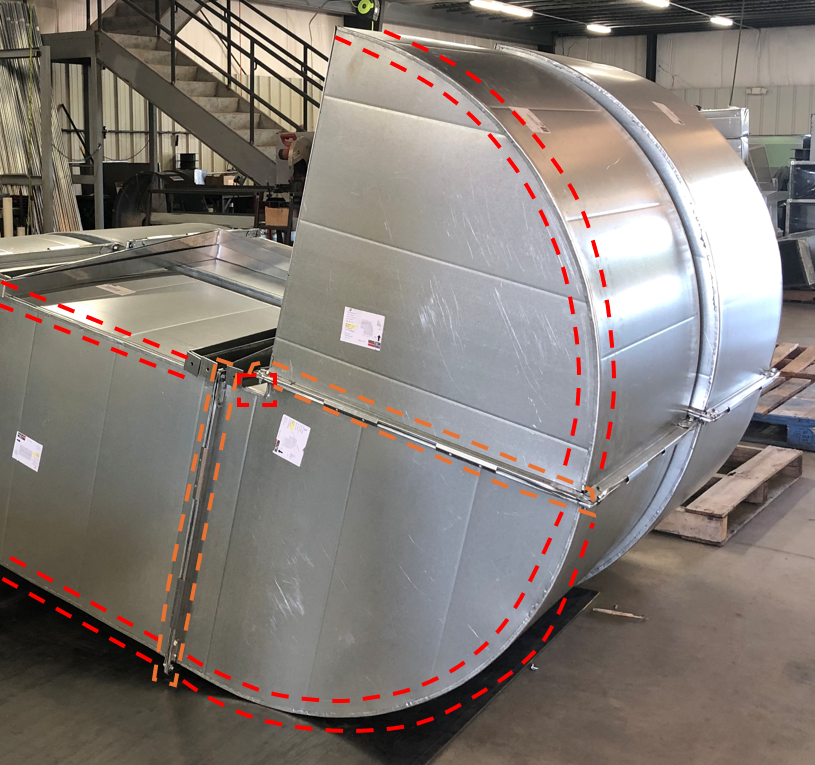
Transverse Joints (Orange) and Longitudinal Seams (Red)
The Pittsburgh is a corner lockseam consisting of a female pocket seam and a male right angle. The male right angle flange is “seated” and secured into the female pocket seam with a tinners hammer, leaving the remaining tail of the seam sticking up as a flange commonly referred to as a “hammer over edge”.
The remaining tail of the female Pittsburgh is “hammered” over itself the Pittsburgh lock is created. It’s airtight and watertight.
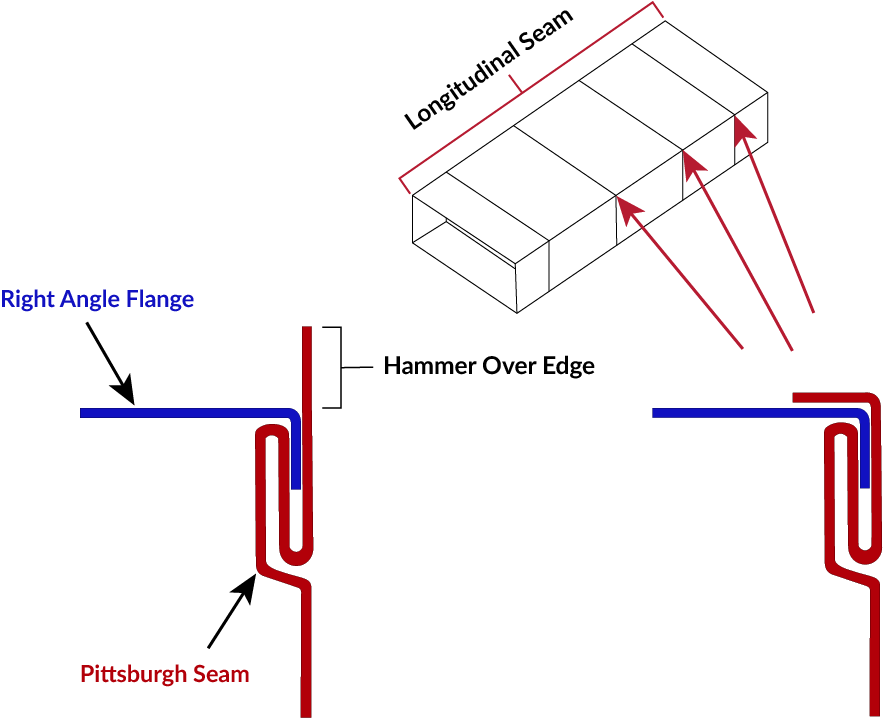
The Air Distribution Package Starts with the Takeoffs from the Trunk Duct
It’s from the rectangular duct that smaller diameters of round pipe—either 26 gauge Snaplock or spiral duct—will tap into thru Shoetaps and conical takeoffs so as to pull air distribution from the trunk duct out to individual rooms and areas of the building.
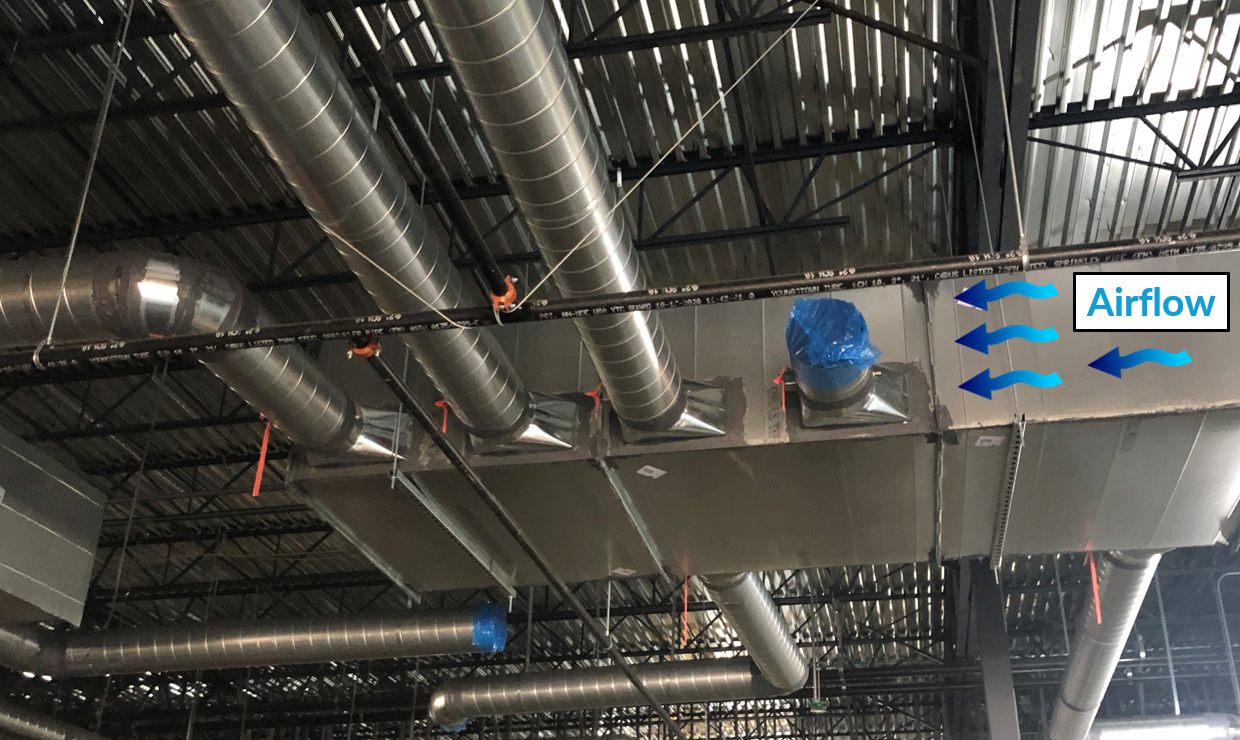

Branch duct attached to airtite takeoff (left) and to HETOs (right) on trunk duct
Any duct that is tapped into the rectangular duct, isn’t considered trunk duct but instead, “branch duct” that’s part of the air distribution portion of the ductwork. Branch duct comes off the side of the rectangular duct by means of a fitting that connects the round branch duct to the trunk duct. Whenever you see one of these takeoff fittings, it indicates the start of branch duct.
These fittings—whether they are Airtite Takeoffs, Shoetap HETOs, or Conicals—are flat on one end and round on the other. The end that’s flat is cut into the trunk duct; the end that’s round is connecting to either spiral duct or Snaplock Pipe.
